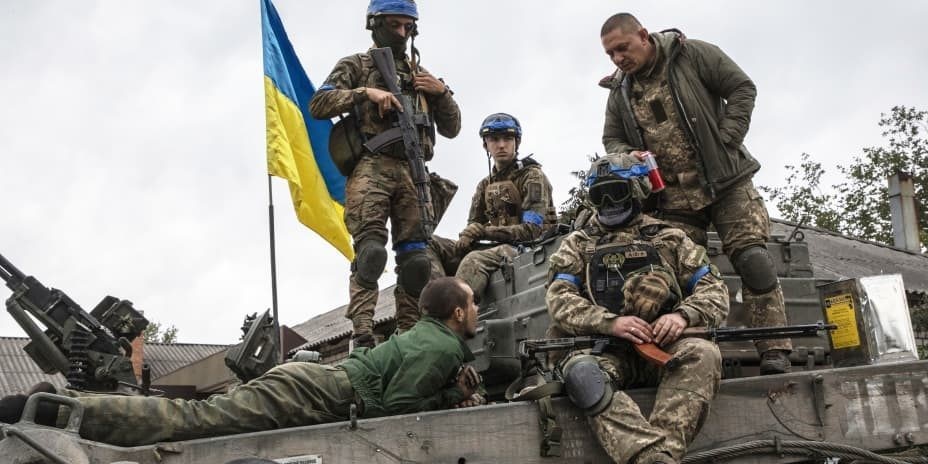Why We Are in Ukraine Part 1
In recent weeks, a number of pieces have appeared in conservative venues calling into question U.S. assistance to #Ukraine (exemplified here, and here). The criticism of American involvement, though sometimes thought-provoking, is wrong on the most essential points.
This argument holds that #Russia attacked Ukraine first in 2014 and more forcefully in 2022 because the U.S. engineered a “coup” against the democratically elected pro-Russian Viktor Yanukovych, began pouring Western weapons into Ukraine, and had begun a process of bringing Ukraine into NATO, which posed an unacceptable security threat to Moscow. Today, support for Ukraine is a failed policy from which the West should disentangle itself.
This is, to put it mildly, an undeservedly charitable assessment of Russian behavior. It also sells short the Ukrainian cause and the U.S. contribution to it.
The “Coup” of 2014
Viktor Yanukovych had run for the presidency once before, in 2004, and was defeated by Viktor Yushchenko—but only after a poisoning attempt on the pro-Western Yushchenko failed, leaving him disfigured, and after the Supreme Constitutional Court threw out the initial election results due to massive evidence of fraud favoring Yanukovych. Yanukovych then served for a time as prime minister under Yushchenko, provoking a constitutional crisis in 2007 when his parliamentary majority sought to strip the president of powers. That crisis only ended when new elections were held and Yanukovych lost his majority and his position as prime minister.
Yanukovych was finally elected president in 2010 in what was widely judged a fair election—winning with 49 percent of the vote on a promise to seek membership in the European Union. When, at the last possible moment, Yanukovych pulled a bait-and-switch, abandoning the Ukraine-Europe Association Agreement and signing instead an agreement binding Ukraine to Russia, protests began in Kyiv. As the security services applied brutal force to disperse the crowds, the demonstration grew in size and intensity and spread to other Ukrainian cities. After snipers opened fire on protesters, killing dozens, enraged Ukrainians were on the verge of full-blown revolt. In the middle of the night, Yanukovych fled to Russia, where he still resides and has helpfully offered himself as a replacement for Volodymyr Zelensky should Ukrainians come to their senses. He may have achieved power through electoral means, but he is no democrat. He was before politics a street gangster, a thoroughly Soviet man, and probably the most corrupt president in the short history of a government that has frequently been tainted by official corruption. He was, without doubt, Moscow’s man in Kyiv.
Critics of U.S. policy make much of the supposed role of U.S. diplomat Victoria Nuland in supporting the protests and allegedly naming the next Ukrainian government, claims that come out of a leaked phone call with U.S. ambassador to Ukraine Geoffrey Pyatt during the protests. The transcript of the phone call, however, shows that their discussion was not about how to overthrow Yanukovych but how to help the opposition broker a deal with him that would end the standoff—that is, they were doing what diplomats do. It is clear that U.S. policymakers were hoping to steer events, but also that the Ukrainians were acting on their own. In the end, the opposition leaders and the protestors they were largely following did not make the deal with Yanukovych that Nuland and Pyatt were angling for.
Altogether, most Ukrainians do not call this a “coup.” They call it a revolution—the “Revolution of Dignity”—and its casualties “the Heavenly Hundred.” It was a revolution by a civil society that had grown impressively in complexity and resilience since independence in 1991, from the bottom up. It is odd that many who point out that the U.S. experience in Afghanistan proved that civil society cannot simply be invented from scratch no matter how many dollars are dropped over the landscape seem to be convinced that the U.S. invented civil society in Ukraine by dropping dollars over the landscape. In reality, the Ukrainians who rose up did so because they perceived that if they did not, they would be drawn inexorably back into Moscow’s orbit. As Ukraine would be quietly Putinized, the vibrant civil society they had forged would be extinguished. At most, a husk of democracy would remain. They demanded a different route.
Ukrainians did not and do not embrace the EU because they are attracted to its esoteric social policies, its nannyism, or its appeal to the globalist elites of Davos. Their concerns are more straightforward. They want to be rid of their Soviet past. They want to be prosperous and free, so they want to be incorporated into the system of the free and prosperous West. It is not more complicated than that. Someday they may come to find, like the British, that the EU has a downside, that Russia is not the only entity that can threaten their sovereignty. For them, that is a problem for another day.
Provoked by NATO?
Taking advantage of the political chaos following the Revolution of Dignity—and the correct perception that Barack Obama and the West would do next to nothing in response—Russia militarily occupied Crimea, then sent troops to aid separatists in Donbas, some of whose leaders (such as Igor Girkin) were Russian military intelligence officers. Ukrainian nationalism was stoked in three ways. The revolution gave Ukrainians a stronger sense of nationhood, the Russian incursions pushed them to rally around the blue and yellow, and the seizure of Crimea and part of Donbas took out of the Ukrainian electorate the portions of the population most sympathetic to Russia. Between 2014 and 2022, some Russian-speaking regions that had once seemed to be wavering, such as Kharkiv, aligned more firmly with Kyiv as the unhappy economic and political fate of occupied Donbas became clearer to see.
What did not happen, however, was either NATO membership for Ukraine or a flood of NATO weapons. On the contrary, by 2022, NATO had been considering Ukraine for 14 years and seemed highly unlikely to actually admit it anytime in the near future, if at all. Moreover, Obama resolutely opposed the provision of lethal military aid to Ukraine, despite Russian aggression in Crimea and Donbas. Donald Trump agreed to limited military aid such as Javelin anti-tank rockets, short-range man-portable anti-aircraft weapons, and training programs, but not much more. Joe Biden did not significantly expand on that until Russian troops were driving toward Kyiv. With eight years to prepare, the West had not supplied Ukraine with heavy artillery, tanks, anti-shipping or long-range air defense missiles, or combat aircraft. On February 24, 2022, most of its arsenal still consisted of old, if not obsolete, Soviet stockpiles. Not until several months later did the West begin to remedy some of those deficiencies, and some remain today. The Biden administration itself has reportedly used its influence for months to block our Eastern European allies from transferring aircraft to Kyiv.
It is reasonable to conclude that what drove war was not Russian fear of NATO, which in 2022 had neither come close to accepting Ukraine nor significantly armed it. Indeed, even if Ukraine had joined NATO, this would not have posed an “existential threat” to the survival of Russia, any more than the NATO membership of Poland or Latvia. A free and independent Ukraine oriented to the West does, however, pose an existential threat to “Russian World,” the vague idea endorsed by Putin, Russia’s ultra-nationalists, and the Russian Orthodox patriarch, among others. Roughly speaking, in its most aggressive current incarnation, Russian World holds that those who speak Russian, have a cultural affinity with Russia, or otherwise live in territories that were once part of historic Russia should be brought back together under the tutelage of Moscow and in opposition to the West. Opponents of U.S. aid to Ukraine tend to pooh-pooh both Russian World and Putin’s publicly repeated sentiment that the collapse of the Soviet Union was the greatest geopolitical tragedy of the 20th century. Yet it is the imperial dream of Russian World, not Russia itself, that cannot survive if Ukraine chooses a Western path.
The other thing that might not survive a free Ukraine is Vladimir Putin’s regime. From West Germany to South Korea to Hong Kong and Taiwan, the existence of free alternatives has made neighboring dictators nervous. The Orange Revolution in 2004 and the Revolution of Dignity in 2014 provide highly visible demonstrations of civil society putting abusive political leaders in their place. The Ukrainian example is one that cannot help but make Putin uncomfortable. His discomfort was surely heightened by the massive demonstrations, mimicking the Ukrainian revolutions, that took place in Minsk in 2020 protesting the fraudulent “re-election” of long-time Belarusian dictator Aleksandr Lukashenko. Lukashenko survived with Russia’s help, but the episode sent tremors through the Kremlin and helps explain Belarus’s participation in the campaign against Ukraine. The critics rarely acknowledge this dimension of Russia’s motivation, and so make no effort to answer the question: are we really to throw small nations to the wolves in order to calm the potentially insatiable insecurities of tyrants?
Continue Reading Why We Are In Ukraine Part 2: https://www.colmikehoward.com/article/Why+We+Are+in+Ukraine++Part+2





